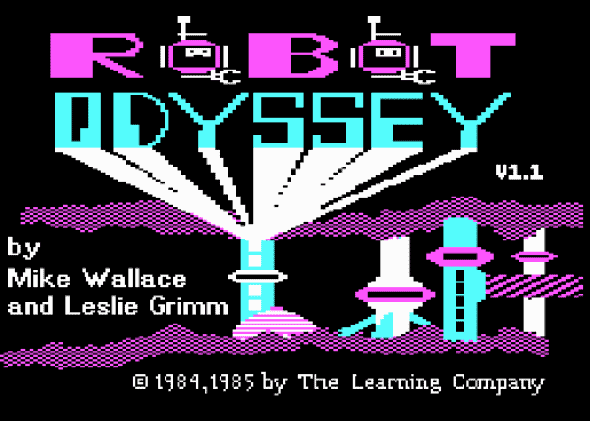The hardest game of all time

Robot Odyssey
New York-based programmer David Auerbach recalls a computer game that took him 13 years to complete and defined his future as a programmer.
At the age of six, David saw an educational game Rocky's Boots from Learning Company on an Apple IIe computer with 128 KB of memory . This game introduced the basics of formal logic to children. Two years later, the same company released a masterpiece called Robot Odyssey , in which it took a step from the theory of formal logic to the practice of programming. To go through all the levels of this game, even the most talented players took years. David Auerbach was able to do this in 13 years. True, I had to use some outside help.
David is sure that any child who became interested in this game in childhood will inevitably become a programmer. And among adults, interest in Robot Odyssey clearly indicates that a person should change his occupation and go to engineers / programmers.
In any case, Robot Odyssey is one of the most creative games of the Apple IIe era, that is, the mid-80s.
In the story, a player in a dream gets into the mysterious city of Robotropolis. To return home, he is offered five levels of difficulty: medium, difficult, very complex, impossible and impossible-2. In principle, in a couple of years with a great desire, you can go through the first three levels, but impossible levels - this is already beyond fantasy. For those geniuses who were able to solve puzzles at difficult levels, the development company issues special certificates. For example, in 2002, one player received a certificate as the 34th person in the world to complete a game.
Each level was developed by a separate employee of the Learning Company, so the levels have little in common. For example, the diabolical fourth level was created by 16-year-old scholar-scholar Sean Gordon. It is at this level that most players are stuck forever.
The leaders of the Learning Company believe that it is unlikely that any of the company's employees completed this game at all levels.
To solve puzzles, they give three (sometimes four) robots that can be connected to contacts and programmed. From left to right: these are Sparky, Scanner and Checkers. They can move, recognize walls, pick up and throw objects, as well as communicate with each other.

Sparky, Scanner and Checkers
By programming we mean not familiar to us high-level programming, but the most low-level code, at the level of logic gates (AND, OR, NOT), of which microcircuits consist. So Robot Odyssey is not only programming, but also electrical engineering. Gates implement primitive operations from formal logic or Boolean algebra.

Boolean algebra is exceptionally simple. It deals with two opposite values: TRUE and FALSE, but here in the case of electricity flow this turns into ON and OFF. Robots have motors for movement, so by connecting robots to a logic gate that receives an external value, you can control the movement of the robot depending on external conditions.
By controlling the logic gates, you can solve various problems, simple to start with, but more and more complex with level progression.

When it is necessary to solve really complex problems by moving robots, the programming possibilities of these logic gates seem very limited, they are not enough. But the highlight is that with their help you can program anything you like if you move your brains well. Writing complex programs on such simple elements literally “melts” the brain, says David Auerbach.
For example, a game allows you to “imprint” created electrical circuits into microchips for ascent. The illustration shows one of these chips, which uses many OR logic gates for stereo recording .

The idea of the game is to simulate the multifaceted complexity of the world using the simplest elements. The ideas laid down in those days were continued in some modern games, such as Minecraft.
